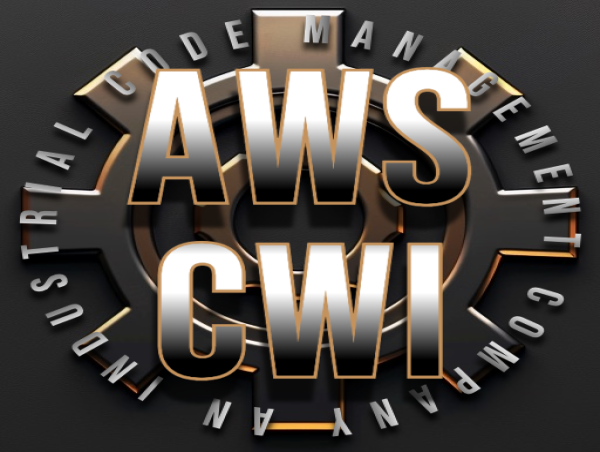A Comprehensive Guide to Welding Evaluation Techniques and Ideal Practices for Quality Control in Manufacture Projects
Welding assessment offers as a basic pillar in ensuring the structural integrity and safety of made tasks. Developing efficient methods and a robust quality management system can boost conformity and integrity.
Relevance of Welding Inspection
Welding examination is an important element in making sure the stability and safety and security of bonded frameworks. The process includes a methodical examination of welds to determine any defects that might jeopardize the strength and longevity of the end product. Efficient evaluation is vital not only for conformity with sector criteria and laws yet likewise for protecting the health and wellness of employees and the general public.

In addition, welding evaluation offers as an important device for continual enhancement in manufacture processes. By recognizing persisting problems, organizations can implement corrective procedures, leading to improved training for welders and far better general methods. Inevitably, focusing on welding assessment promotes a society of quality control, guaranteeing that tasks satisfy both customer assumptions and governing demands. This proactive technique is important for achieving excellence in welding and construction.
Common Welding Examination Methods
Different techniques are used to examine welds, each customized to find specific sorts of problems and ensure high quality. Amongst the most typically made use of methods are visual evaluation, ultrasonic testing, radiographic testing, magnetic fragment screening, and dye penetrant screening.
Aesthetic inspection is the most uncomplicated approach, enabling examiners to recognize surface area irregularities such as fractures, porosity, and undercutting. Ultrasonic screening employs high-frequency acoustic waves to detect interior defects, giving an extensive evaluation of weld integrity. Radiographic testing uses X-rays or gamma rays to produce photos of the weld, revealing internal defects that are not visible to the nude eye.
Magnetic particle screening is particularly reliable for ferromagnetic products, identifying surface area and near-surface issues by applying electromagnetic fields and utilizing fine bits that show irregularities. Dye penetrant testing entails applying a colored color to the weld surface, which leaks right into cracks and is exposed under ultraviolet light, making it very easy to spot issues.
Each of these techniques plays a crucial function in maintaining welding high quality, and the selection of a suitable approach depends on the certain needs of the manufacture task, including material type, weld arrangement, and the preferred degree of examination.
Crucial Inspection Tools


These instruments help guarantee that welds satisfy the needed requirements for toughness and durability. Additionally, ultrasonic testing gadgets are utilized to find inner imperfections without compromising the stability of the weld.
An additional essential tool is the solidity tester, which assesses the mechanical homes of a weld and identifies its viability for specific applications. Finally, welding assessment software program help in recording searchings for, facilitating information analysis, and guaranteeing conformity with sector requirements. Together, these important inspection devices develop an extensive collection that sustains the welding assessment process, ultimately adding to the quality control of manufacture tasks.
Finest Practices for Quality Guarantee
In browse around these guys the quest of quality control, implementing best techniques is crucial for attaining reputable and constant welding results. Developing a comprehensive welding high quality monitoring system (WQMS) is fundamental. This system should include defined treatments, requirements, and documentation techniques that assist every phase of the welding procedure.
Routine training and accreditation of welding personnel are crucial. Skilled welders with upgraded understanding of strategies and safety and security steps contribute dramatically to high quality. Performing pre-welding evaluations guarantees that products and tools fulfill defined requirements, minimizing the possibility of flaws.
Integrating real-time surveillance during the welding process permits for immediate discovery of abnormalities, enabling restorative activities to be taken quickly. Post-welding assessments, consisting of visual checks and non-destructive screening (NDT), are vital in confirming weld integrity and compliance with sector standards.
Furthermore, keeping meticulous records of examinations, weld parameters, and restorative activities cultivates a culture of liability and continuous renovation. Engaging stakeholders in routine quality evaluations can additionally boost the overall effectiveness of quality control steps. By adhering to these finest techniques, organizations can considerably raise their welding quality control efforts, consequently making sure job success and customer complete satisfaction.
Enhancing Safety And Security and Conformity
Accomplishing high criteria in welding top quality guarantee normally straightens with the imperative of boosting safety and security and compliance within the market. Effective welding inspection strategies are important in ensuring and recognizing prospective hazards that all procedures follow governing requirements. These strategies not only offer to preserve architectural stability but also shield the health Your Domain Name and wellness of workers associated with manufacture projects.
Applying extensive examination procedures, such as aesthetic evaluations, non-destructive screening (NDT), and complete documentation, develops a culture of safety and security and responsibility. Educating welders and inspectors in present safety laws and finest techniques is important. This ensures that all group participants know prospective risks and are geared up to minimize them.
Furthermore, conformity with sector standards, such as those set by the American Welding Culture (AWS) and the International Company for Standardization (ISO), is non-negotiable. Regular audits and evaluations assist recognize gaps in security procedures and advertise continuous improvement - Welding Inspection Milwaukee. Eventually, a dedication to boosting safety and compliance not only promotes a more secure working environment but likewise causes premium quality outcomes and minimized liability for companies participated his comment is here in welding fabrication
Conclusion

Welding evaluation offers as an essential pillar in making sure the structural stability and safety of made jobs.Welding assessment is a vital part in making sure the honesty and safety of bonded frameworks. Ultimately, focusing on welding evaluation promotes a society of quality guarantee, making certain that jobs fulfill both customer assumptions and regulatory demands. Together, these necessary inspection devices form a detailed arsenal that supports the welding assessment process, eventually adding to the high quality guarantee of fabrication projects.
In final thought, reliable welding inspection is crucial for ensuring the structural stability and security of produced tasks. Welding Inspection Milwaukee.